In the fourth part of the expansion of the small Exchange organization, it's DAG's turn. The domain controller and Sophos UTM are already running redundantly and the second Exchange server has also been prepared. An Exchange DAG (Database Availability Group) is now required so that the failure of an Exchange server or the failure of the Hyper-V / ESX server can also be intercepted.
Foreword
For the DAG with two Exchange servers, an additional Windows server is required as a witness server. The witness server must not run on one of the two hypervisors that also host the Exchange servers. In the environment I have described, a third physical server (Server 3) is therefore required:
The witness server is required to determine which Exchange server has failed and which is the remaining Exchange server. The witness server does not have to fulfill any special hardware requirements, only a few small files will be stored here later.
Background witness server
The DAG is based on the Windows Failover Cluster feature and the Windows Failover Cluster works according to the "voting principle". In simple terms: Each cluster member receives one vote, within the cluster the majority of votes must always be guaranteed, otherwise the operation will be stopped. In the case of two Exchange Servers, each Exchange Server has one vote; if one of the Exchange Servers fails, one vote is also lost. The cluster would cease operation as the majority is no longer guaranteed. The one remaining vote is not the majority, so we would need more than 50% of the votes.
This is where the witness server comes into play. The witness server gets 0.5 votes. With two Exchange servers and one witness server, the entire cluster therefore has 2.5 votes. If one Exchange server fails, 1.5 votes remain. This means that the majority is maintained and everything is fine. The reason for the majority is simple: a failover can only be carried out if it is clear which of the two servers has failed.
The horror scenario: Somewhere a switch or uplink fails, Exchange1 can no longer communicate with Exchange2, Exchange1 thinks it has to bring the passive database online, Exchange2 also thinks it has to bring the passive database online. Without a witness server, we would have active databases on both Exchange servers and inevitably corrupt data. To avoid this, the witness server is asked and the majority is determined.
Configuration of the witness server
Hardly anything needs to be prepared on the witness server. It is sufficient to install Server 2012 R2 and add it to the Active Directory. I have installed the server fs.frankysweb.org with the IP 172.16.100.17.
When configuring the network, make sure that both DNS servers are specified:
In order for the witness directory to be configured by Exchange, the "Exchange Trusted Subsystem" group must be added to the local administrators group:
That's all, let's continue with the configuration of the DAG.
Exchange DAG configuration
The DAG can now be configured on one of the two Exchange servers
Once the DAG has been created, the two Exchange servers can be added:
After a short time, the servers have been added and the dialog can be closed.
It should now look like this in the EAC:
A DAG with the name "FWDAG1". The servers with the names "Exchange" and "Exchange2" are members, the witness server is "FS".
Configuration of database copies
A copy of each of the two databases must now be added to the other Exchange server:
A copy of the "MailboxDB" database is therefore configured on "Exchange2":
A copy of the second database is also added to the "Exchange" server:
After the copies have been added, it should look something like this:
After the copies have been added, the status can be checked.
Review
Before a failure can be tested, it should be checked whether the mailbox copies and the index are in order:
Get-MailboxDatabaseCopyStatus -Server exchange Get-MailboxDatabaseCopyStatus -Server exchange2
- One of my indexes was damaged. I have recreated the index:
Using the following command, the index can then be transferred to the second server (if the index is defective on both servers)
Update-MailboxDatabaseCopy MailboxDB\EXCHANGE2 -CatalogOnly
The failure
The most important test is, of course, the failure of an entire server. In this case, a domain controller, an Exchange server and a Sophos UTM are no longer available at the same time. I test the failure of Server1:
Server1 contains the active Sophos UTM, a domain controller and the Exchange server with the active database "MailboxDB" in which the administrator mailbox is stored. In my case, there is a failover of the UTM cluster and a failover of the mailbox database "MailboxDB". As a reminder, a load balancer for Exchange is not used. You can see the result in the video:
At the top right is a ping to the domain controller "DC", in the middle is a ping to the Exchange server. At the top left is a ping to my blog and at the bottom left the ping to the UTM. If Server1 fails, the passive UTM takes over after a short time; only one ping is lost here. Exchange Server and Domain Controller remain offline, Outlook does not notice any of this. The failover to Exchange2 was successful:
Conclusion
There is no short conclusion at this point. There is a more detailed article on the pros and cons and the unresolved problems.
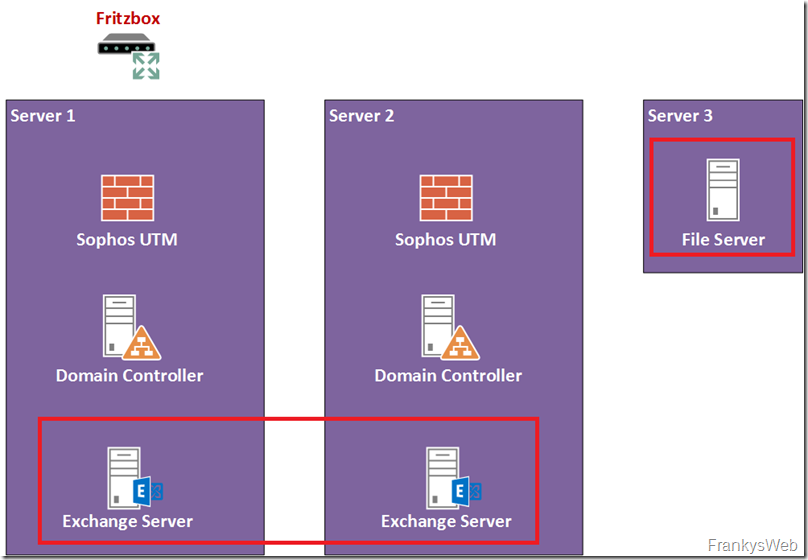
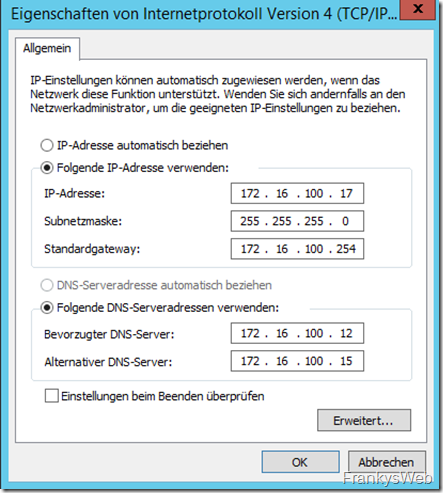
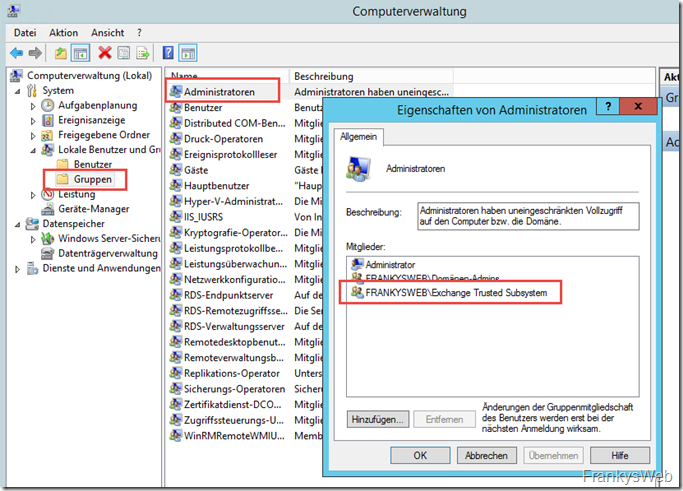
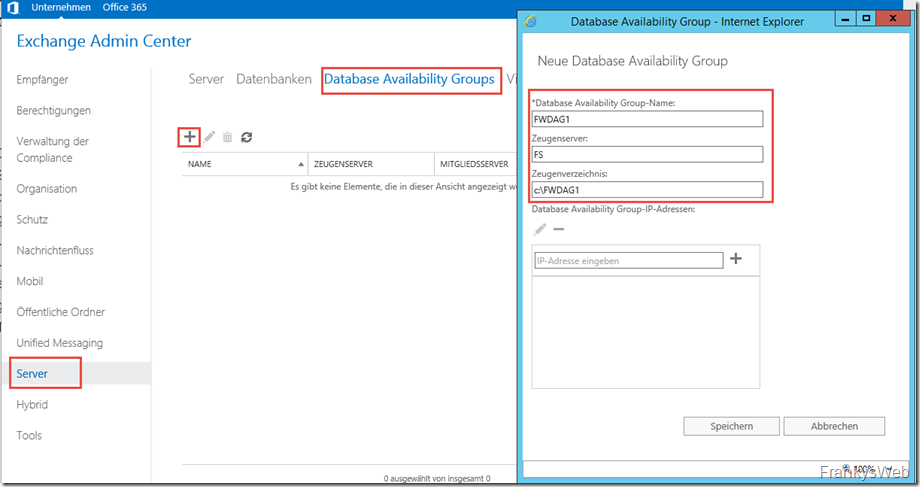
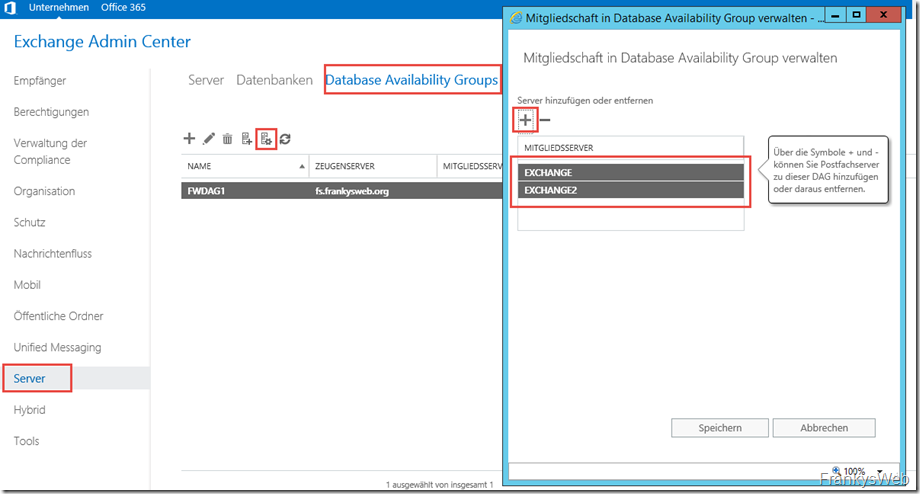
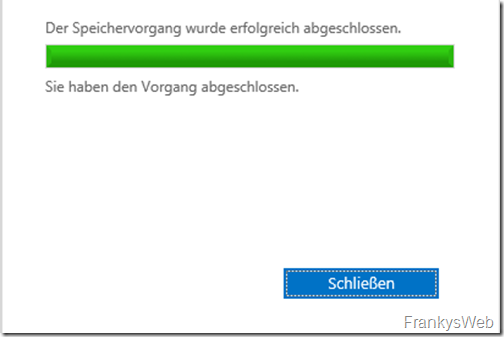
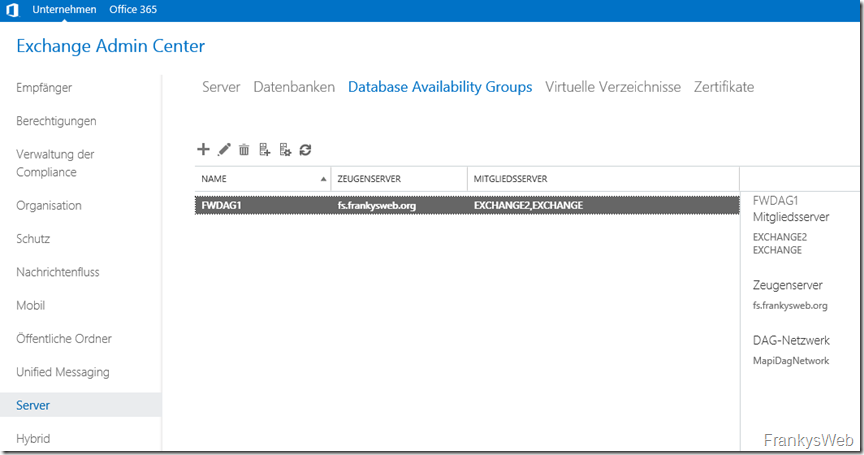
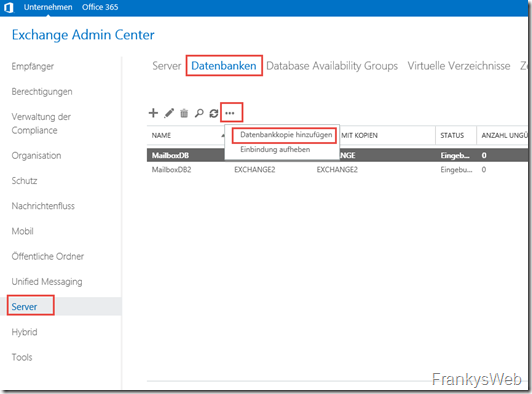
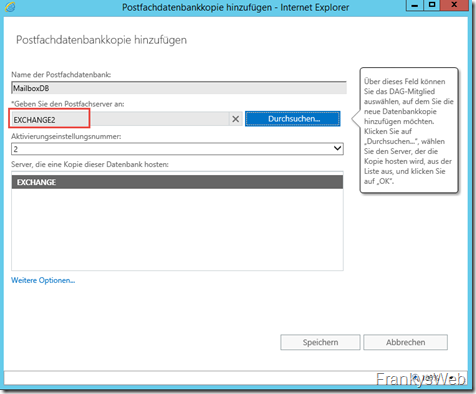
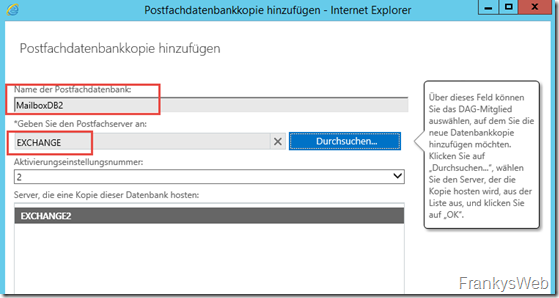
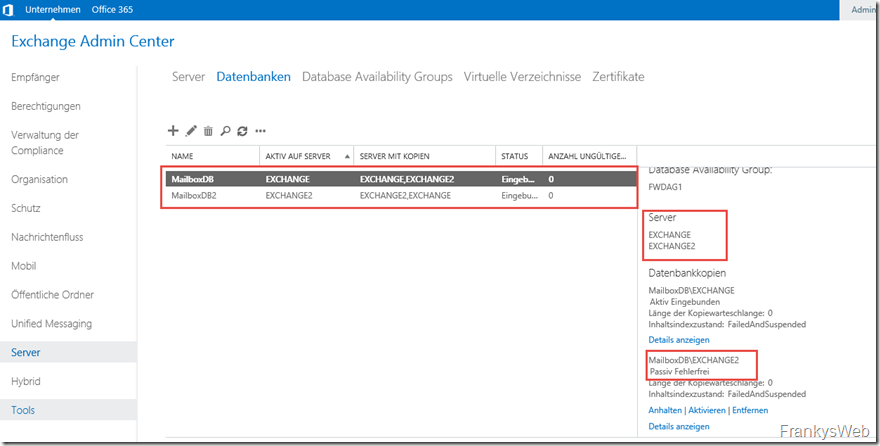

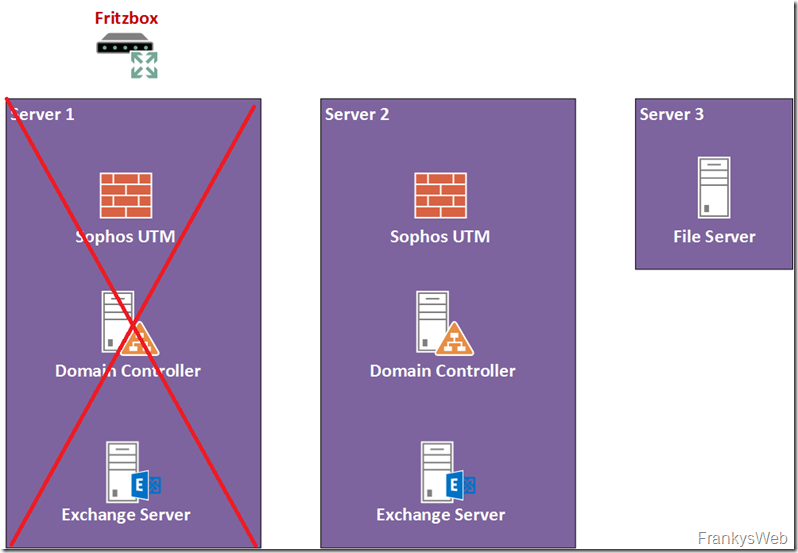
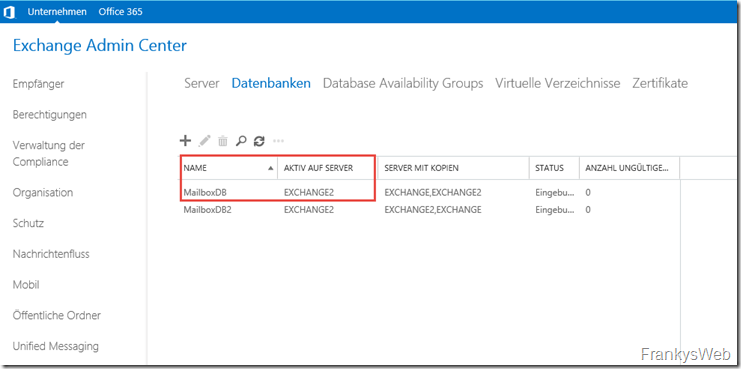
Guter Artikel, falls jemand hier das mit einem Exchange 2019 als Vorlage zur Installation iner DAG nutzt: Lasst euch nicht irritieren bei dem Index Thema. Bei der Anzeige der Datenbanken steht da contentindexstate
notapplicable
Das heißt nicht, das der Index nicht geht. Der Exchange 2019 benutzt nur BigFunnel. Am besten ein Postfach in die entpsrechende DB verschieben und das Postfach abfragen mit:
Get-MailboxStatistics test2|fl BigFunnel*
@Franky: Ggf. ein kleiner Hinweis in dem Artikel als Update?
Hallo Franky,
danke für deinen immer wieder kehrenden Artikel zu allem was ich in Sachen Exchange suche ;-)
Wir setzen gerade bei einem Kunden eine neue Exchange Landschaft auf, da noch ein einzelner 2016er Exchange auf einem alten 2012R2 läuft …
Eine kurze Frage zu den Replikationswegen: Ich habe noch irgendwie im Kopf aus alten Zeiten und Claude empfiehlt mir es auch gerade wieder eigene NICs und ein eigenes Netzwerk für die Replikation einer DAG zu konfigurieren, die nur für die Replikation zuständig sind. Hast du da Erfahrungen mit? Möglich wäre es ohne Probleme ein zusätzlichen Netz einzurichten. Aber bei nicht ganz 100 Usern halte ich das für etwas Oversized, gerade weil die Netze eh als Bridge in Proxmox hängen und wir 10GB zwischen den Servern haben. Was sind da deine aktuellen Erfahrungen? Danke und toll das es deine Seite gibt, danke!
Hallo Frank
Ich habe Deine Dokumentationen zum Aufbau einer kleinen Exchange Umgebung und der Erweiterung auf Basis Exchange 2019 gelesen und bin begeistert von Deinem ganzheitlichem Ansatz. Weiter so … bitte.
Beim Durcharbeiten Deiner Anleitung ist mir nun in Verbindung mit der „Hochverfügbarkeit“ aufgefallen, dass der ClientAccess nicht auf beide Exchange Server erfolgt, da anfangs ein echter Host und ein virtueller Host nur auf einen Exchange Server verwiesen.
Habe ich den Punkt überlesen? Ich habe es leider bisher nicht geschafft beide Exchange Server über den virtuellen Host auf der Sophos ansprechen zu können. Der Versuch den DNS Host „mail.domain.ltd“ zu verwenden, der im internen DNS auf beide Systeme deutet, als echten Webserver in Sophos über einen virtuellen Webserver ansprechen zu können, brachte keine Verbindung zusammen.
Wo liegt mein Problem? Hast Du einen Tipp für mich?
LG
Michael
Hallo Frank,
beim Erstellen einer DAG bekomme ich immer auf beiden Servern diesen Fehler:
Fehler beim serverseitigen Verwaltungsvorgang für eine Database Availability Group. Fehler: Fehler bei Vorgang. CreateCluster-Fehler können von falsch konfigurierten statischen Adressen verursacht werden. Fehler: Das Windows-Failoverclustering ist auf SERVER1.domain.de‘ nicht installiert. [Server: server1.domain.de]
Beide sind 2012 R2 Server mit fester IP, eigentlich exakt Dein Nachbau. Wo könnte der Fehler liegen? DNS Auflösung funktioniert fehlerfrei an beiden Servern.
Gruß Karsten
Hi Andreas,
auf welches Problem spielst du an? HTTP Keep Alive? Dann ist es nur eine Frage, wo die EAS Verbindung terminiert wird.
Gruß, Frank
EAS Ausfallsicher zu machen geht natürlich ohne Load Balancer nicht oder?
Bzw. wie löst du das Problem?